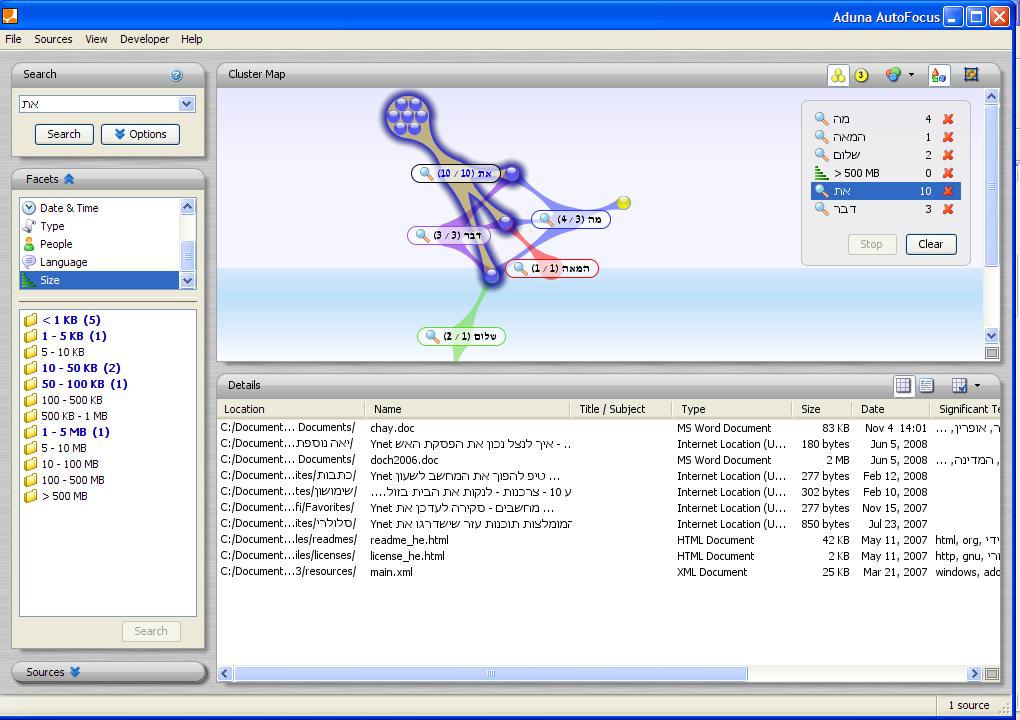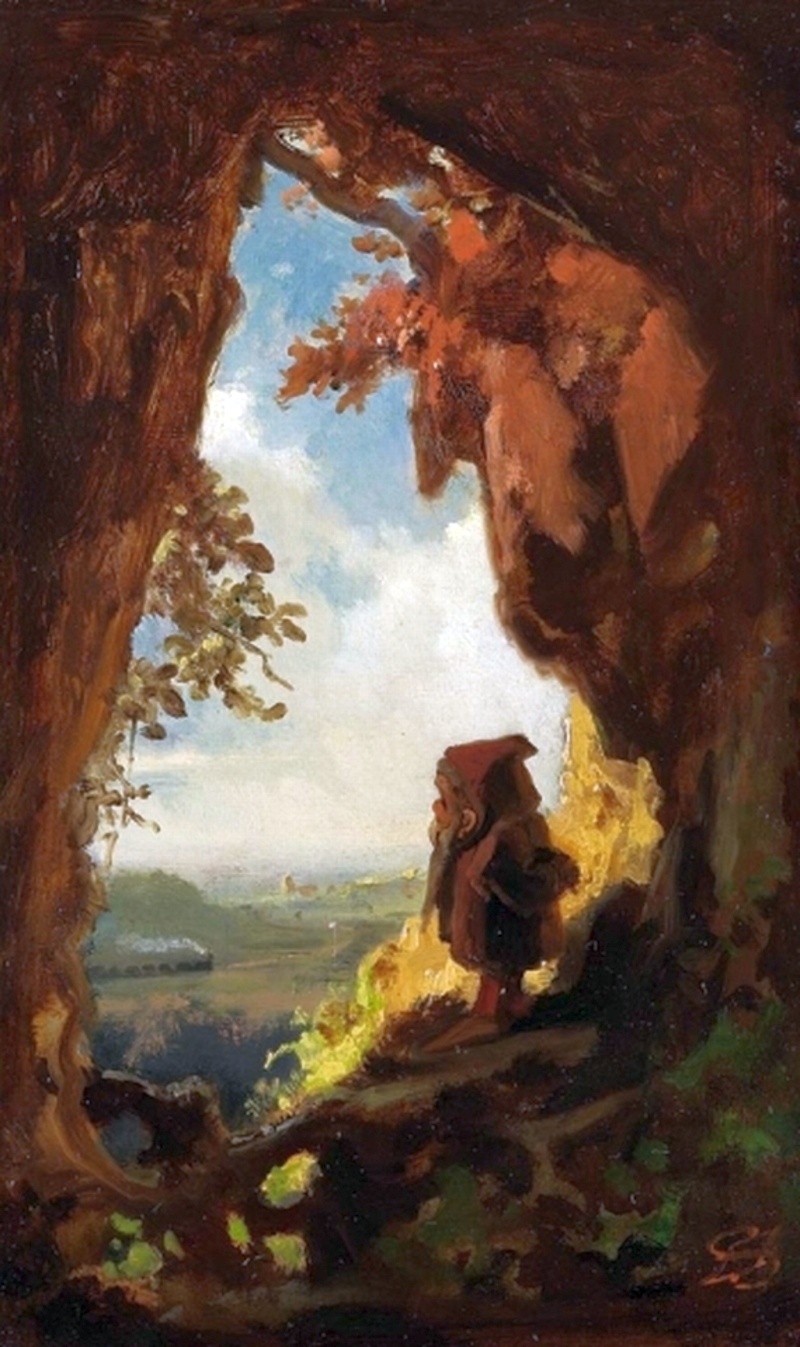|
GNOME Storage
GNOME Storage was a project to replace the traditional file system with a new document store. Storage was part of a larger design for a new desktop environment that was still under development. The current implementation includes natural language access and network transparency. Storage is no longer being developed; its CVS tree has not been changed for several years. Since the introduction of Storage, desktop search came to prominence, and now GNOME desktop search projects (Beagle, also defunct, as well as Tracker, formerly MetaTracker) have largely supplanted the need for Storage. See also * WinFS, a Microsoft Microsoft Corporation is an American multinational corporation and technology company, technology conglomerate headquartered in Redmond, Washington. Founded in 1975, the company became influential in the History of personal computers#The ear ... project with similar goals External links GNOME Storage Homepage GNOME Storage software {{GNOME-stub ... [...More Info...] [...Related Items...] OR: [Wikipedia] [Google] [Baidu] |
Document
A document is a writing, written, drawing, drawn, presented, or memorialized representation of thought, often the manifestation of nonfiction, non-fictional, as well as fictional, content. The word originates from the Latin ', which denotes a "teaching" or "lesson": the verb ' denotes "to teach". In the past, the word was usually used to denote written proof useful as evidence of a truth or fact. In the computer age, Computer Age, "document" usually denotes a primarily textual computer file, including its structure and format, e.g. fonts, colors, and Computer-generated imagery, images. Contemporarily, "document" is not defined by its transmission medium, e.g., paper, given the existence of electronic documents. "Documentation" is distinct because it has more denotations than "document". Documents are also distinguished from "Realia (library science), realia", which are three-dimensional objects that would otherwise satisfy the definition of "document" because they memorialize ... [...More Info...] [...Related Items...] OR: [Wikipedia] [Google] [Baidu] |
Desktop Environment
In computing, a desktop environment (DE) is an implementation of the desktop metaphor made of a bundle of programs running on top of a computer operating system that share a common graphical user interface (GUI), sometimes described as a graphical shell. The desktop environment was seen mostly on personal computers until the rise of mobile computing. Desktop GUIs help the user to easily access and edit files, while they usually do not provide access to all of the features found in the underlying operating system. Instead, the traditional command-line interface (CLI) is still used when full control over the operating system is required. A desktop environment typically consists of icons, windows, toolbars, directory (file systems), folders, computer wallpaper, wallpapers and Widget engine, desktop widgets (see Elements of graphical user interfaces and WIMP_(computing), WIMP). A GUI might also provide drag and drop functionality and other features that make the desktop metaphor mo ... [...More Info...] [...Related Items...] OR: [Wikipedia] [Google] [Baidu] |
Computer Network
A computer network is a collection of communicating computers and other devices, such as printers and smart phones. In order to communicate, the computers and devices must be connected by wired media like copper cables, optical fibers, or by wireless communication. The devices may be connected in a variety of network topologies. In order to communicate over the network, computers use agreed-on rules, called communication protocols, over whatever medium is used. The computer network can include personal computers, Server (computing), servers, networking hardware, or other specialized or general-purpose Host (network), hosts. They are identified by network addresses and may have hostnames. Hostnames serve as memorable labels for the nodes and are rarely changed after initial assignment. Network addresses serve for locating and identifying the nodes by communication protocols such as the Internet Protocol. Computer networks may be classified by many criteria, including the tr ... [...More Info...] [...Related Items...] OR: [Wikipedia] [Google] [Baidu] |
Desktop Search
Desktop search tools search within a user's own computer files as opposed to searching the Internet. These tools are designed to find information on the user's PC, including web browser history, e-mail archives, text documents, sound files, images, and video. A variety of desktop search programs are now available; see this list for examples. Most desktop search programs are standalone applications. Desktop search products are software alternatives to the search software included in the operating system, helping users sift through desktop files, emails, attachments, and more. Desktop search emerged as a concern for large firms for two main reasons: untapped productivity and security. According to analyst firm Gartner, up to 80% of some companies' data is locked up inside unstructured data — the information stored on a user's PC, the directories (folders) and files they've created on a network, documents stored in repositories such as corporate intranets and a multitude of other ... [...More Info...] [...Related Items...] OR: [Wikipedia] [Google] [Baidu] |
Beagle (software)
Beagle is a search system for Linux and other Unix-like systems, enabling the user to search documents, chat logs, email and contact lists. It is not actively developed. Beagle grew out of Dashboard, an early Mono-based application for watching and presenting useful information from a user's computer. It is written in C# using Mono and uses a port of Lucene to C# called Lucene.Net as its indexer. Beagle includes a Gtk#-based user interface, and integrates with Galago for presence information. Beagle was developed and maintained by Joe Shaw with help from the open source community. Notable contributors included Jon Trowbridge, Robert Love, Nat Friedman and David Camp. Features Beagle searches the content of documents and associated metadata. Users can search for: * Applications * Archives ( zip, tar, gzip, bzip2) and their contents * Conversations (Pidgin, Kopete and IRC logs) * Documents ( AbiWord, OpenOffice.org, Microsoft Office, pdf, txt, rtf, HTML) * ... [...More Info...] [...Related Items...] OR: [Wikipedia] [Google] [Baidu] |
Tracker (search Software)
TinySPARQL (formerly known as Tracker) is a file indexing and search framework for Linux and other Unix-like systems. It is written in the C programming language. TinySPARQL has been adopted by the GNOME desktop environment and is heavily integrated into GNOME Shell and GNOME Files. At its core, TinySPARQL is a general-purpose SPARQL-based database; although it is developed together with the file indexer component, it may be used to store or access any kind of data that follows the RDF data model (such as querying Wikidata). One of the developers of the Conduit application has suggested using TinySPARQL to create "a metadata-enabled GNOME", similar to using Strigi as an indexer for a metadata framework in KDE Software Compilation 4. See also * Strigi * NEPOMUK Nepomuk (; ) is a town in Plzeň-South District in the Plzeň Region of the Czech Republic. It has about 3,600 inhabitants. It is known as the birthplace of Saint John of Nepomuk, who was born here around ... [...More Info...] [...Related Items...] OR: [Wikipedia] [Google] [Baidu] |
WinFS
WinFS (short for Windows Future Storage) was the code name for a canceled data storage and management system project based on relational databases, developed by Microsoft and first demonstrated in 2003. It was intended as an advanced storage subsystem for the Microsoft Windows operating system, designed for persistence and management of structured, semi-structured and unstructured data. WinFS includes a relational database for storage of information, and allows any type of information to be stored in it, provided there is a well defined schema for the type. Individual data items could then be related together by relationships, which are either inferred by the system based on certain attributes or explicitly stated by the user. As the data has a well defined schema, any application can reuse the data; and using the relationships, related data can be effectively organized as well as retrieved. Because the system knows the structure and intent of the information, it can be used to m ... [...More Info...] [...Related Items...] OR: [Wikipedia] [Google] [Baidu] |
Microsoft
Microsoft Corporation is an American multinational corporation and technology company, technology conglomerate headquartered in Redmond, Washington. Founded in 1975, the company became influential in the History of personal computers#The early 1980s and home computers, rise of personal computers through software like Windows, and the company has since expanded to Internet services, cloud computing, video gaming and other fields. Microsoft is the List of the largest software companies, largest software maker, one of the Trillion-dollar company, most valuable public U.S. companies, and one of the List of most valuable brands, most valuable brands globally. Microsoft was founded by Bill Gates and Paul Allen to develop and sell BASIC interpreters for the Altair 8800. It rose to dominate the personal computer operating system market with MS-DOS in the mid-1980s, followed by Windows. During the 41 years from 1980 to 2021 Microsoft released 9 versions of MS-DOS with a median frequen ... [...More Info...] [...Related Items...] OR: [Wikipedia] [Google] [Baidu] |
GNOME
A gnome () is a mythological creature and diminutive spirit in Renaissance magic and alchemy, introduced by Paracelsus in the 16th century and widely adopted by authors, including those of modern fantasy literature. They are typically depicted as small humanoids who live underground. Gnome characteristics are reinterpreted to suit various storytellers and artists. Paracelsus's gnome is recognized to have derived from the German miners' legend about or , the "metallurgical or mineralogical demon", according to Georg Agricola (1530), also called (literal Latinization of ''Bergmännlein'', "mountain manikin") by Agriocola in a later work (1549), and described by other names such as (sing. ; Latinization of German ). Agricola recorded that, according to the legends of that profession, these mining spirits acted as miming and laughing pranksters who sometimes threw pebbles at miners, but could also reward them by depositing a rich vein of silver ore. Paracelsus also called ... [...More Info...] [...Related Items...] OR: [Wikipedia] [Google] [Baidu] |




